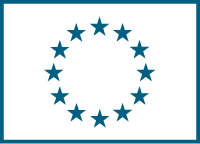Role of the transcription factor ChREBP and its associated proteins in the development and progression of NAFLD
(LIPIDOLIV)
Date du début: 1 févr. 2014,
Date de fin: 31 janv. 2019
PROJET
TERMINÉ
"Changes in lifestyle have resulted in a dramatic epidemic of type 2 diabetes and obesity. Among associated complications, Nonalcoholic Fatty Liver Disease (NAFLD) is emerging as the most common chronic liver disease and is gaining increasing recognition as a component of the epidemic of obesity. NAFLD is generally asymptomatic, although a minority of patients may present progressive liver injury with complications of Nonalcoholic steatohepatitis (NASH), cirrhosis and HCC. Excessive accumulation of fatty acids (FA) stored as triglycerides (TGs) in hepatocytes is the hallmark of NAFLD, which is strongly associated with insulin resistance (IR). However, despite the existing correlation between fatty liver and insulin resistance, it remains unclear whether insulin resistance causes the excessive accumulation of TG in the liver, or whether the increase in TG itself or other lipid intermediates such as diacylglycerols (DAG) and/or ceramides may trigger the development of hepatic or systemic insulin resistance. While some studies support the concept that intrahepatic accumulation of lipids precedes insulin resistance, others suggest that hepatic TG may in fact protect the liver from lipotoxicity by buffering the accumulation of FA. Such discrepancy might be explained since different pools of lipids exist within cells and only certain pools regulate insulin signaling. Consistent with such hypothesis, recent results by our group strongly support that specific FA species may influence hepatic TG storage, insulin signaling and/or inflammation. Therefore, the global aim of our proposal is to better understand the regulation of hepatic fatty acid synthesis and partitioning in addition to its impact on the detailed lipid profile. Using state-of-art technology and key genetically modified mouse models combined with original nutritional approaches and lipidomic analysis, our project aims at providing new information on the molecular basis of the pathogenesis of NAFLD."
Accédez au prémier réseau pour la cooperation européenne
Se connecter
ou
Créer un compte
Pour accéder à toutes les informations disponibles
Coordinateur
INSTITUT NATIONAL DE LA SANTE ET DE LA RECHERCHE MEDICALE
€ 1 500 000,00- Lyddie Laaland
- RUE DE TOLBIAC 101 75654 PARIS (France)
Details
- 100% € 1 500 000,00
-
 FP7-IDEAS-ERC
FP7-IDEAS-ERC
- Projet sur CORDIS platform



